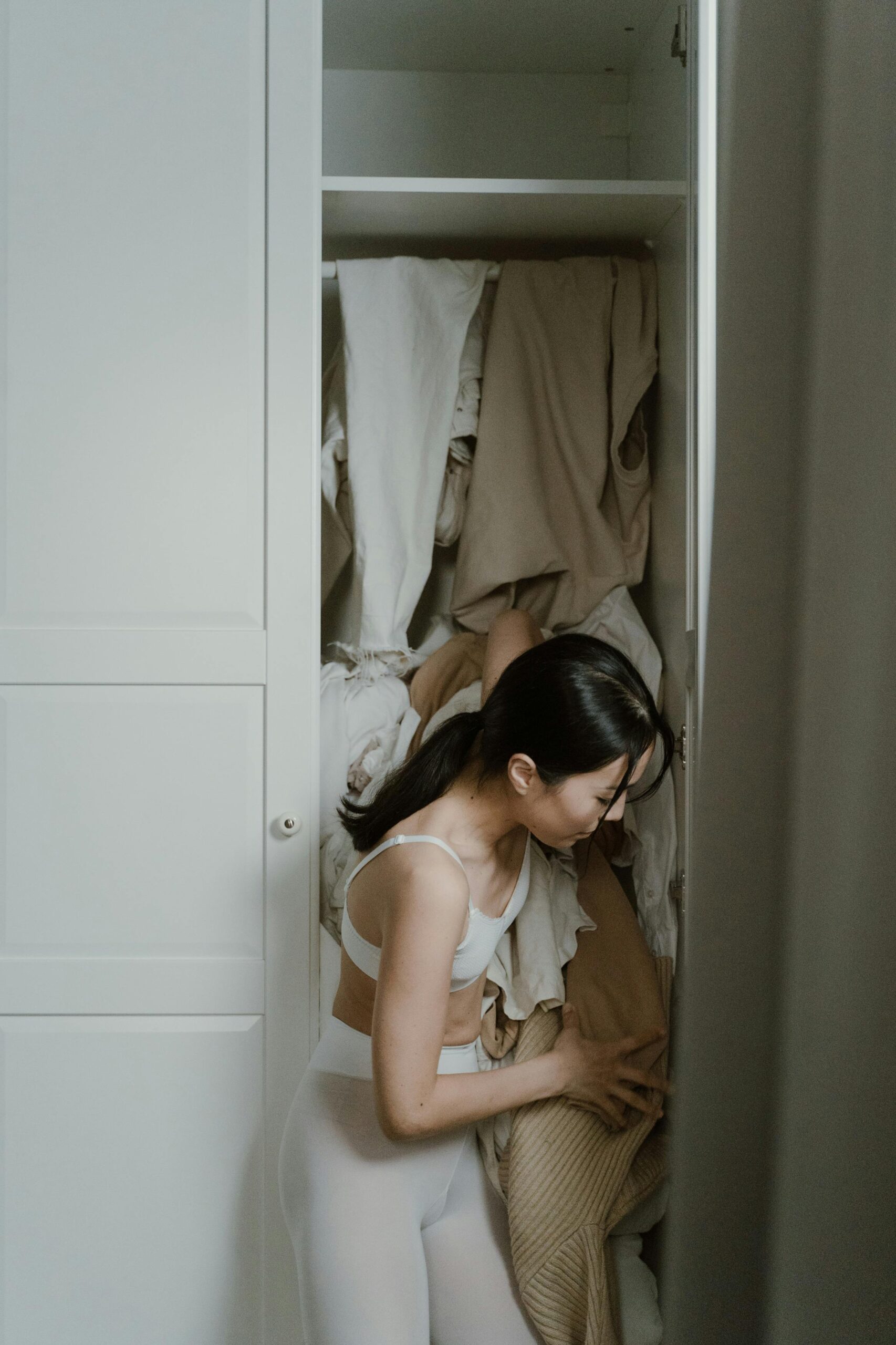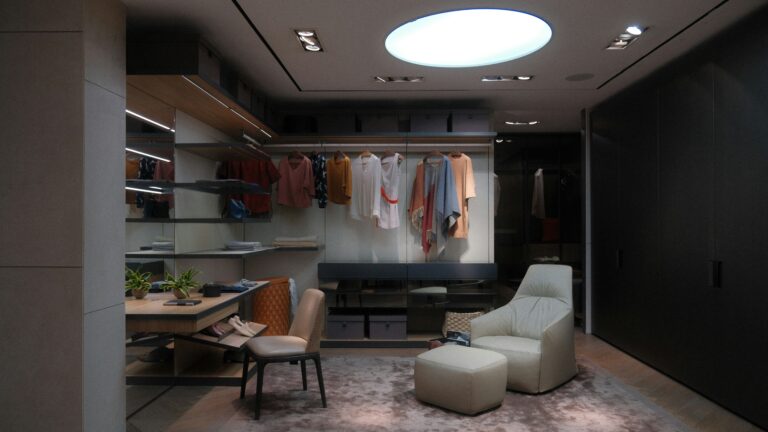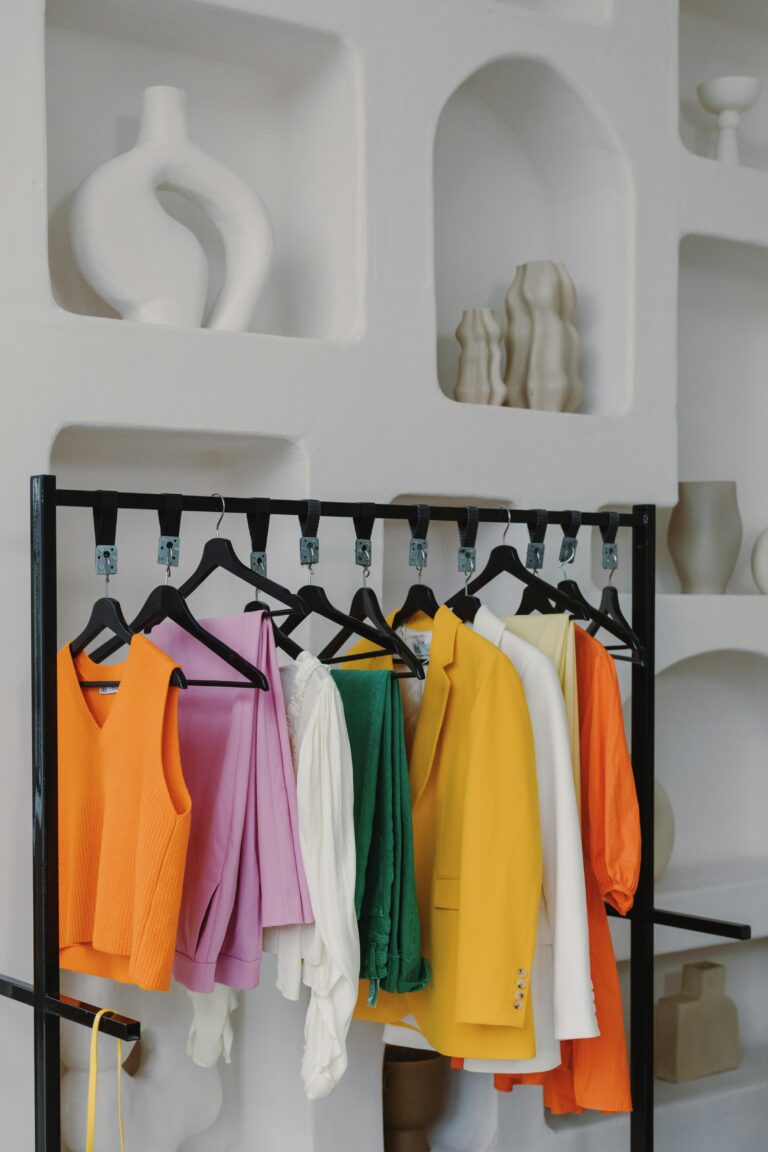The Wardrobe of Ghosts: Why We Keep Clothes We Never Wear
Your closet is haunted. Not by spirits, but by the women you have been, the women you hoped to become, and the women you are not yet ready to let go of.
It is not a museum of neatly concluded stories. It is a living archive; clues, fragments, a physical record of your history. The unworn garments in your closet are not clutter. They are evidence of the lives you have lived, the futures you have imagined, and the tensions that form the very heart of closet psychology.
The Aspirational Self
Consider the dress, bought two sizes too small. Hope explains it. But the truth is sharper: it is an investment; a down payment on a future identity. For some, it is a fantasy; for others, a tangible goal. Its presence in your wardrobe speaks to you every single day.
A closet full of clothes for a future that never arrives becomes a source of dread. These garments are not just a judgment. They are a signal of the dissonance between your lived present and your imagined future. They are a persistent reminder of what you want deep down. They point to a disconnect between your current context and your desired one, and analyzing them is the first step to understanding that gap.
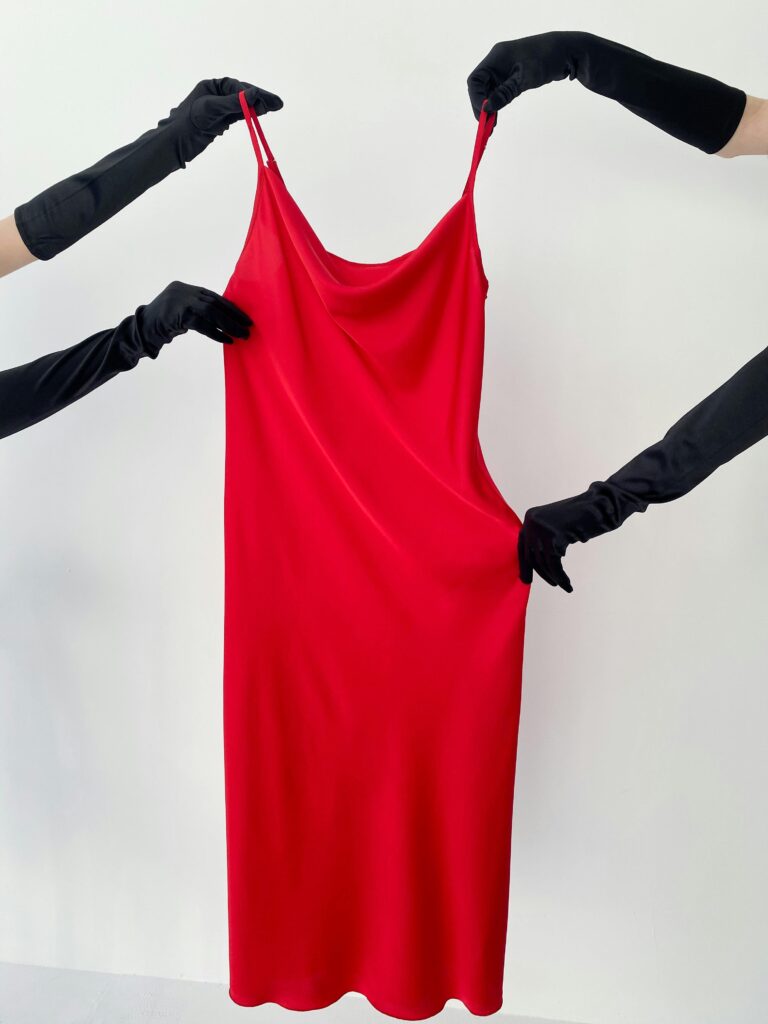
The Garments We Can’t Let Go Of
Next in the archive are the pieces that belonged to a person or a time you miss. These are more than just memories; they often operate like a transitional object. In early psychology, this term describes the way infants use special comfort items, like a stuffed toy, to bridge the gap between self and caregiver. In adulthood, these garments can play a similar role as emotionally supportive objects that help bridge past and present, providing continuity and grounding during change. They provide tactile comfort, continuity, and a link to a feeling you fear will vanish.
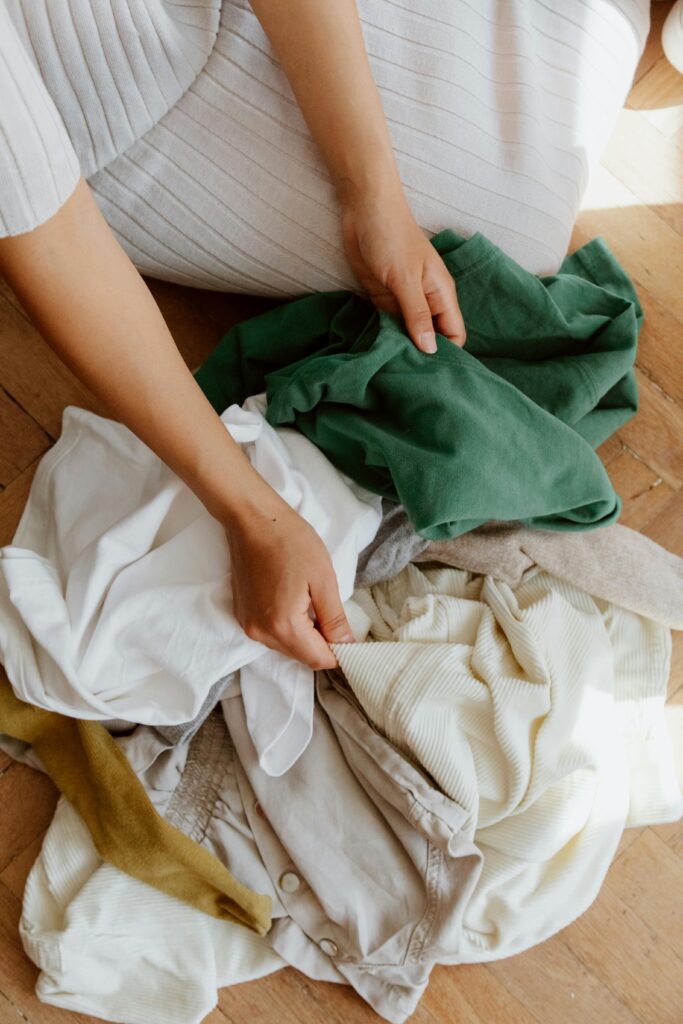
But this archive can become a burden. When you find yourself seeking only the feeling of nostalgia, when you use these garments as a permanent shade to hide from the present, you stop moving forward. A transitional object exists to bridge the gap between your internal self and your external reality. When you use it to escape reality, the garment becomes a weight.
The Archived Self
Separate from transitional objects are the artifacts of your archived selves. These are the clothes from past identities that you no longer inhabit, but are not yet ready to erase. The power suit from a corporate job you hated; the band T-shirt from a rebellious phase.
Touching these garments brings a wave of nostalgia, but their function is different. They are not primarily for emotional comfort; they are for the record. Where a transitional object soothes, these archived garments instead witness. They stand less as comforters, more as markers of survival and growth. The power suit is not just a reminder of a job you hated; it is proof of survival. It is a trophy and a scar. It represents a chapter of your story that is too important to be erased, a testament to the fact that you outgrew it. It is part of who you are, claimed or disowned.
The Curation: A Process of Deaccessioning
Given the emotional and historical weight of these garments, the mainstream advice to simply “declutter” feels shallow and dismissive. We are not just “getting rid of” clothes. We are mindfully curating our personal archive.
The precise, respectful term for this process is deaccessioning. It is the formal term used by archivists when they officially remove an item from a collection. It implies a conscious, analytical process. You are not just tidying; you are assessing a piece’s relevance to the current collection. You are acknowledging its presence, understanding the reason for its impending absence, and letting it go with intention.

The first step in deaccession is not asking, “Does this spark joy?” It is asking harder questions. You must ask: Why do I no longer wear this? Have I outgrown the version of myself who did? Does it no longer serve my lifestyle? Am I unwilling to give it the care it requires? Answering these questions allows you to decide how to let it go: to be donated to someone who needs it, or sold to a new collector.
The clothes you don’t wear are not passive objects. They are a signal, pointing to an unresolved tension in your self-image, your lifestyle, or your emotional history.
In the end, your closet isn’t just a repository of fabric. It is a mirror reflecting who you have been and revealing who you are afraid to become. And in naming the ghosts within it, you begin to hear their questions. In answering them, you don’t simply empty a closet. You step into a future released from your past.
